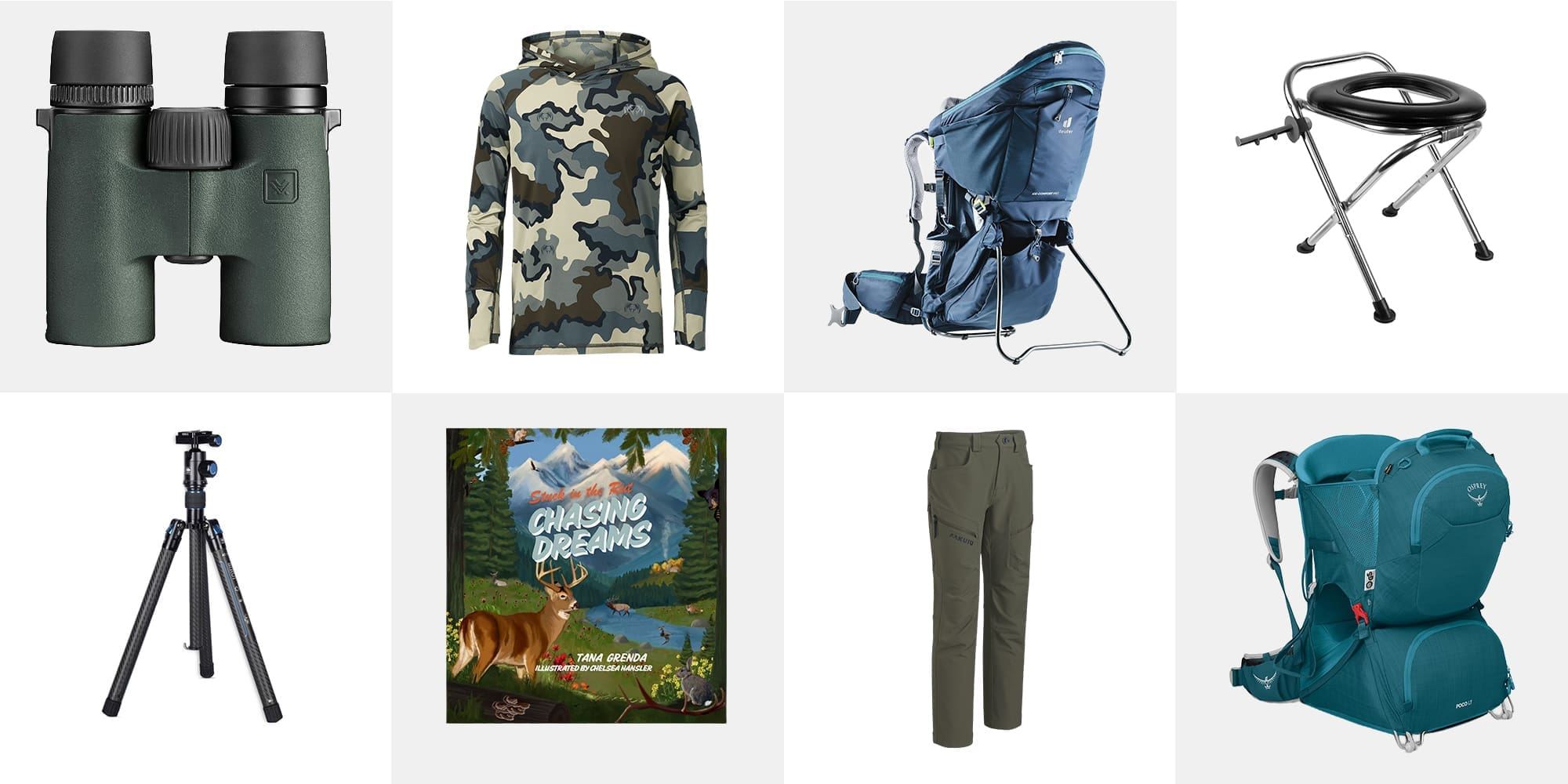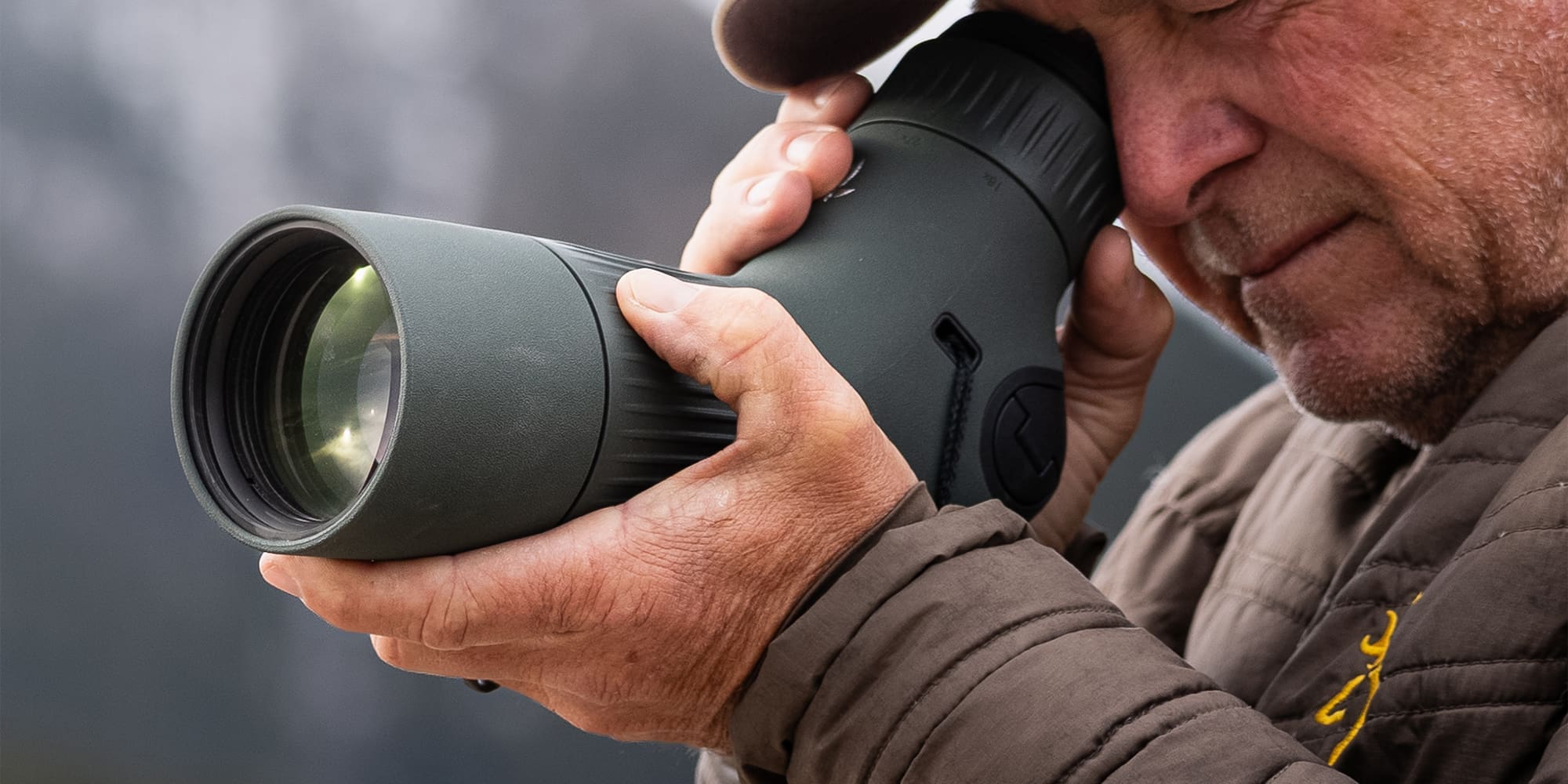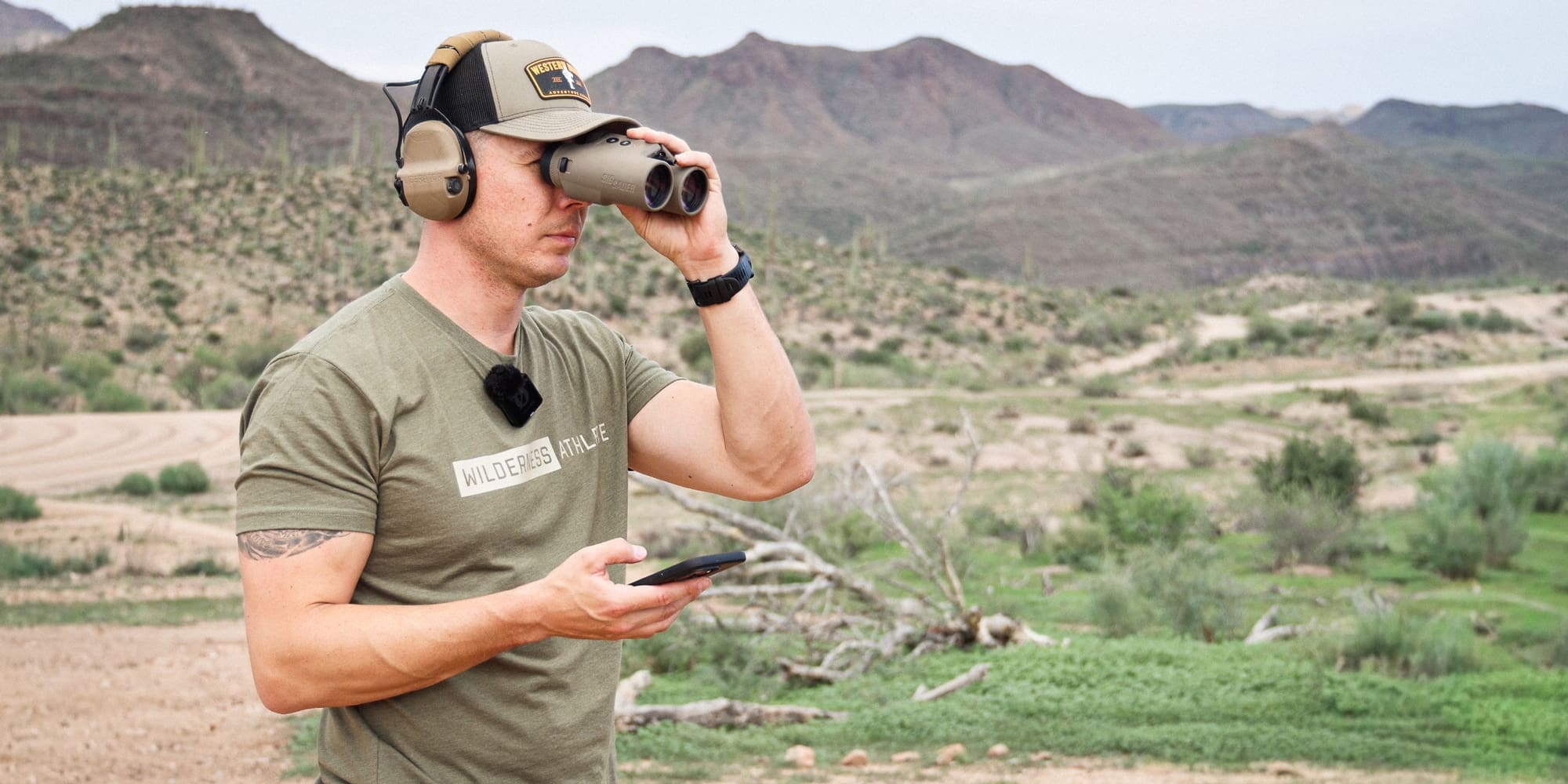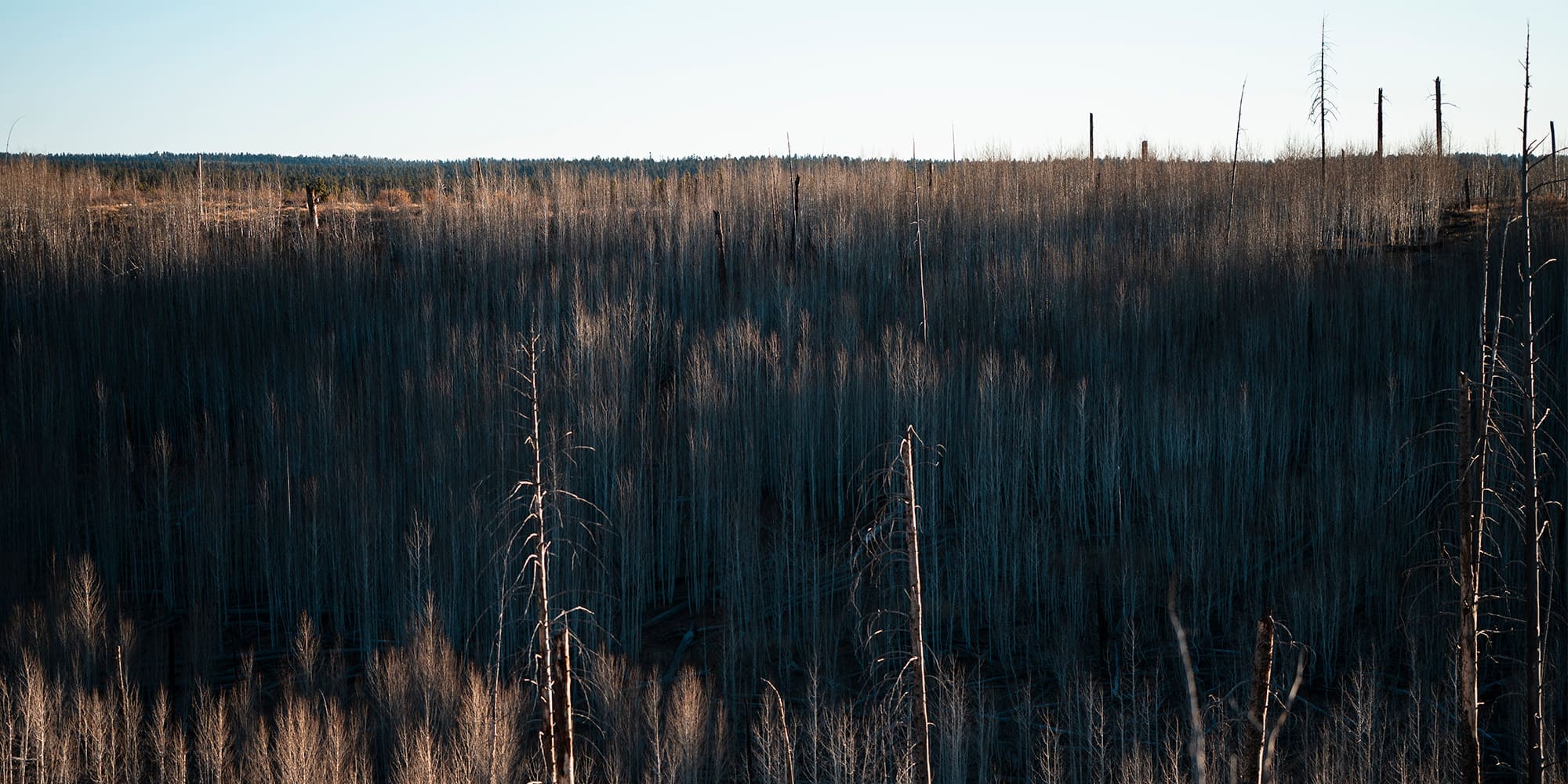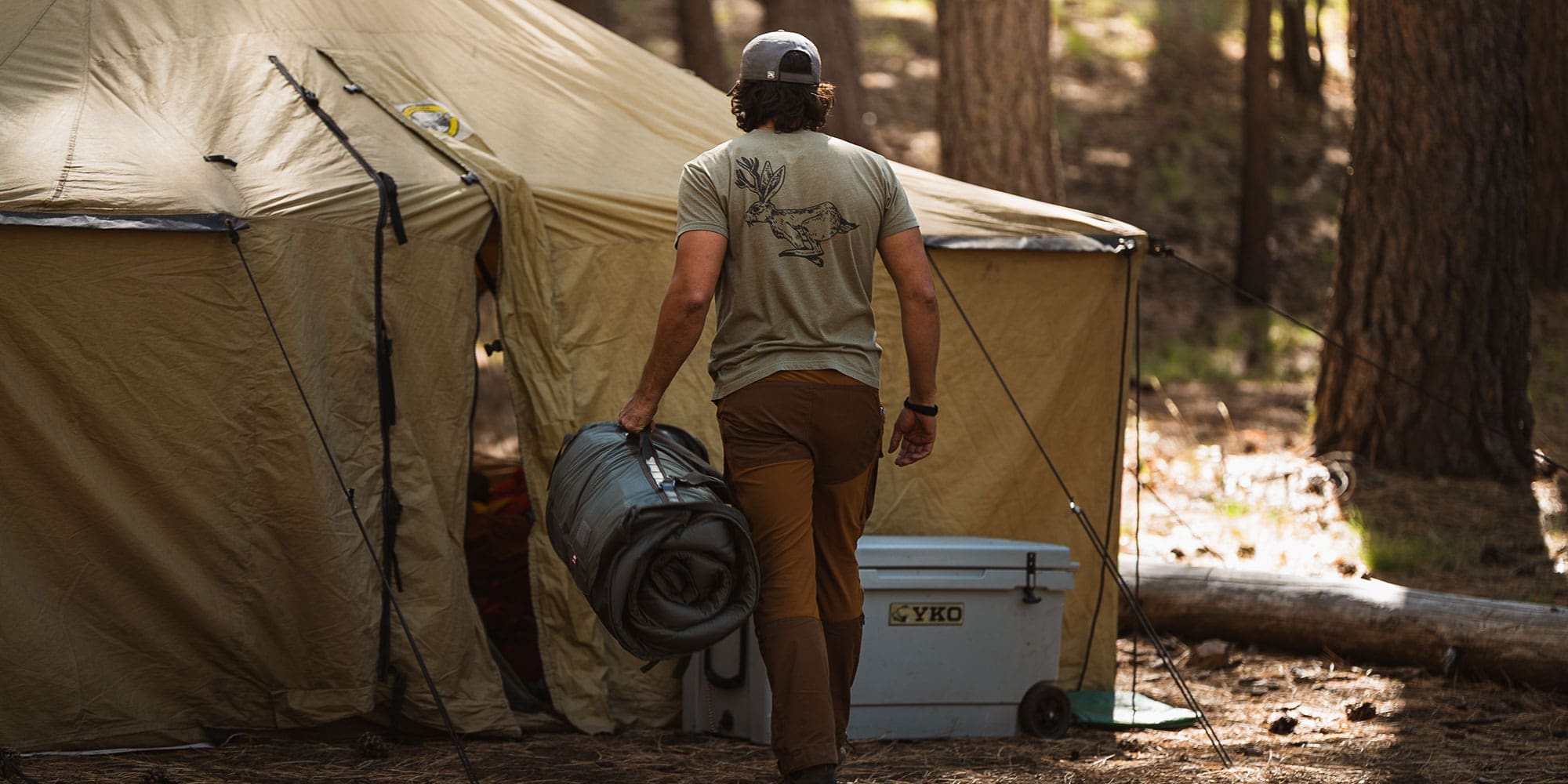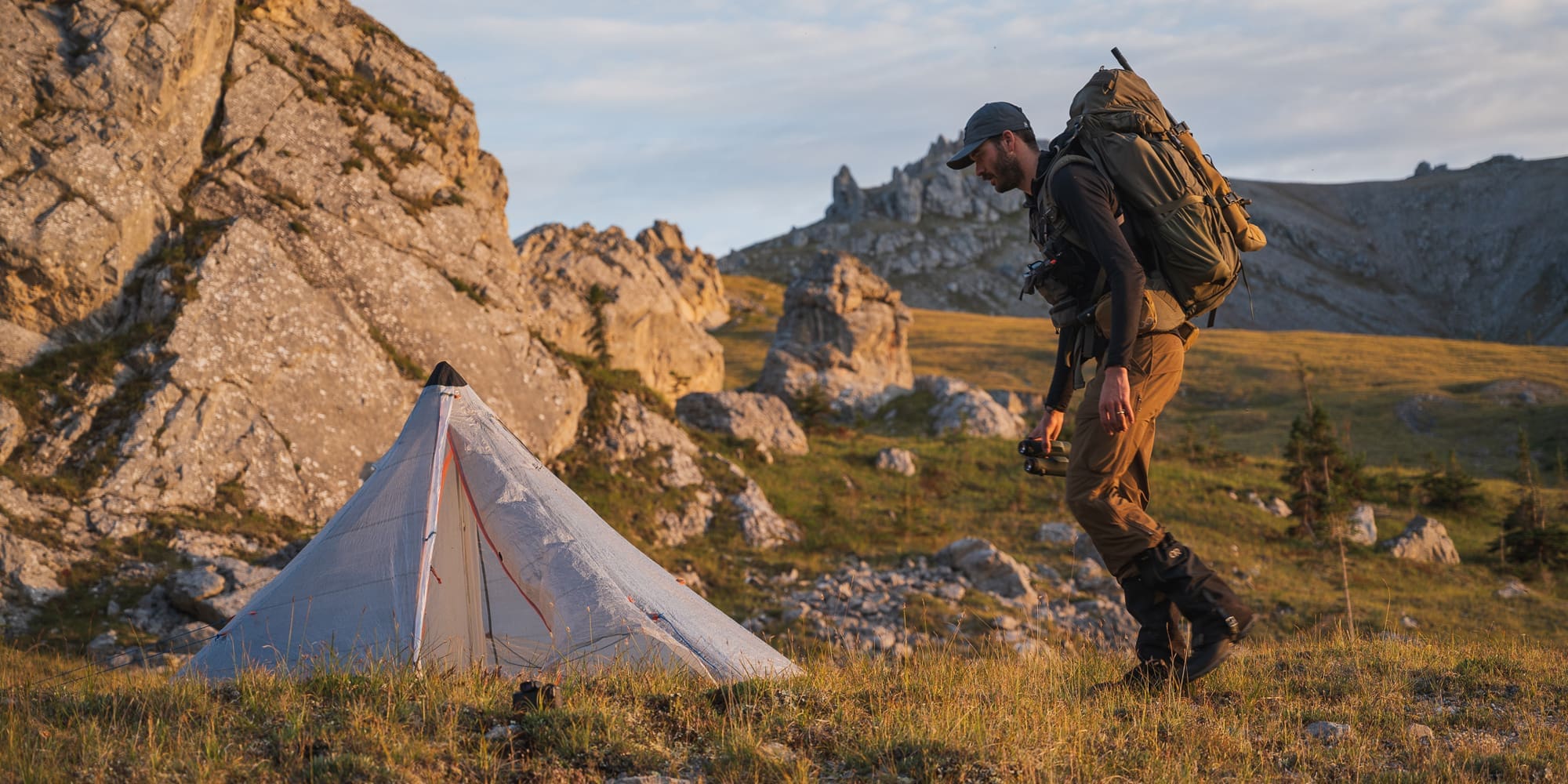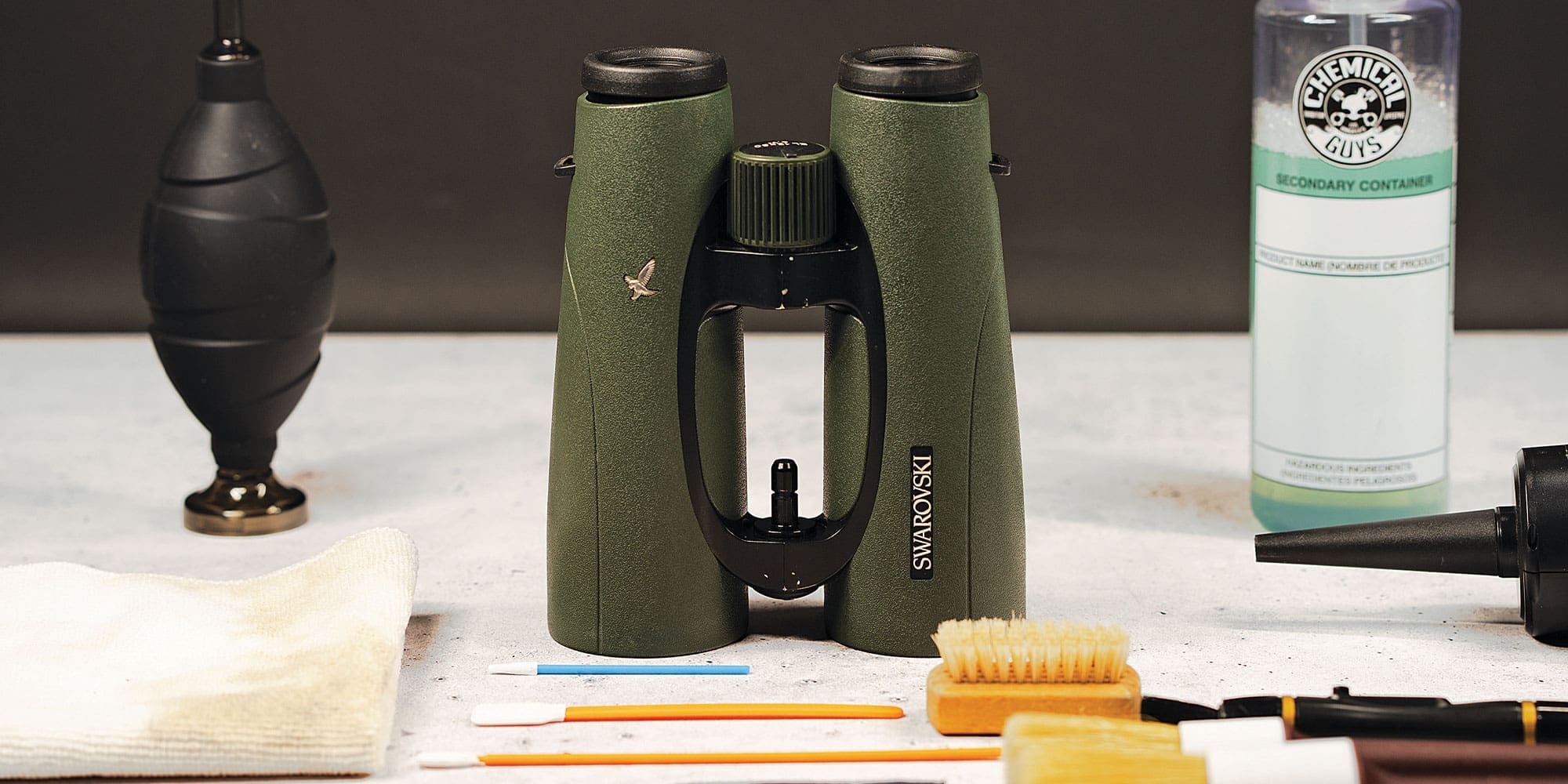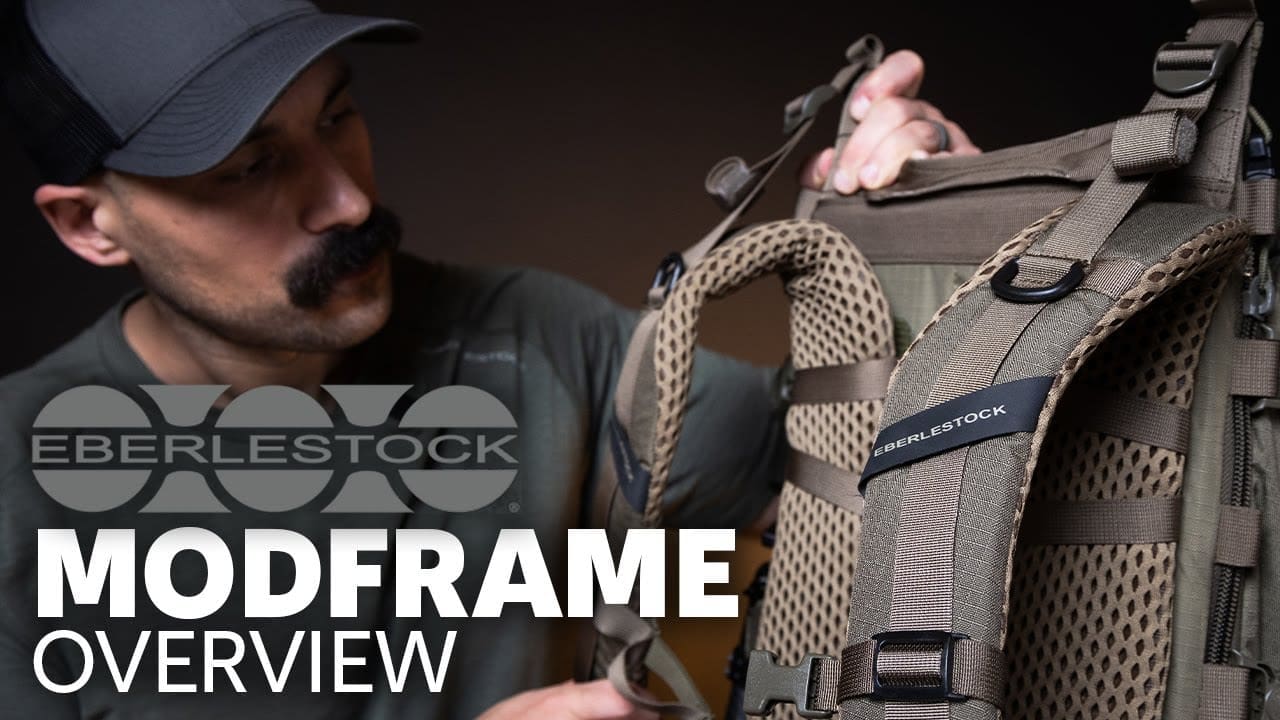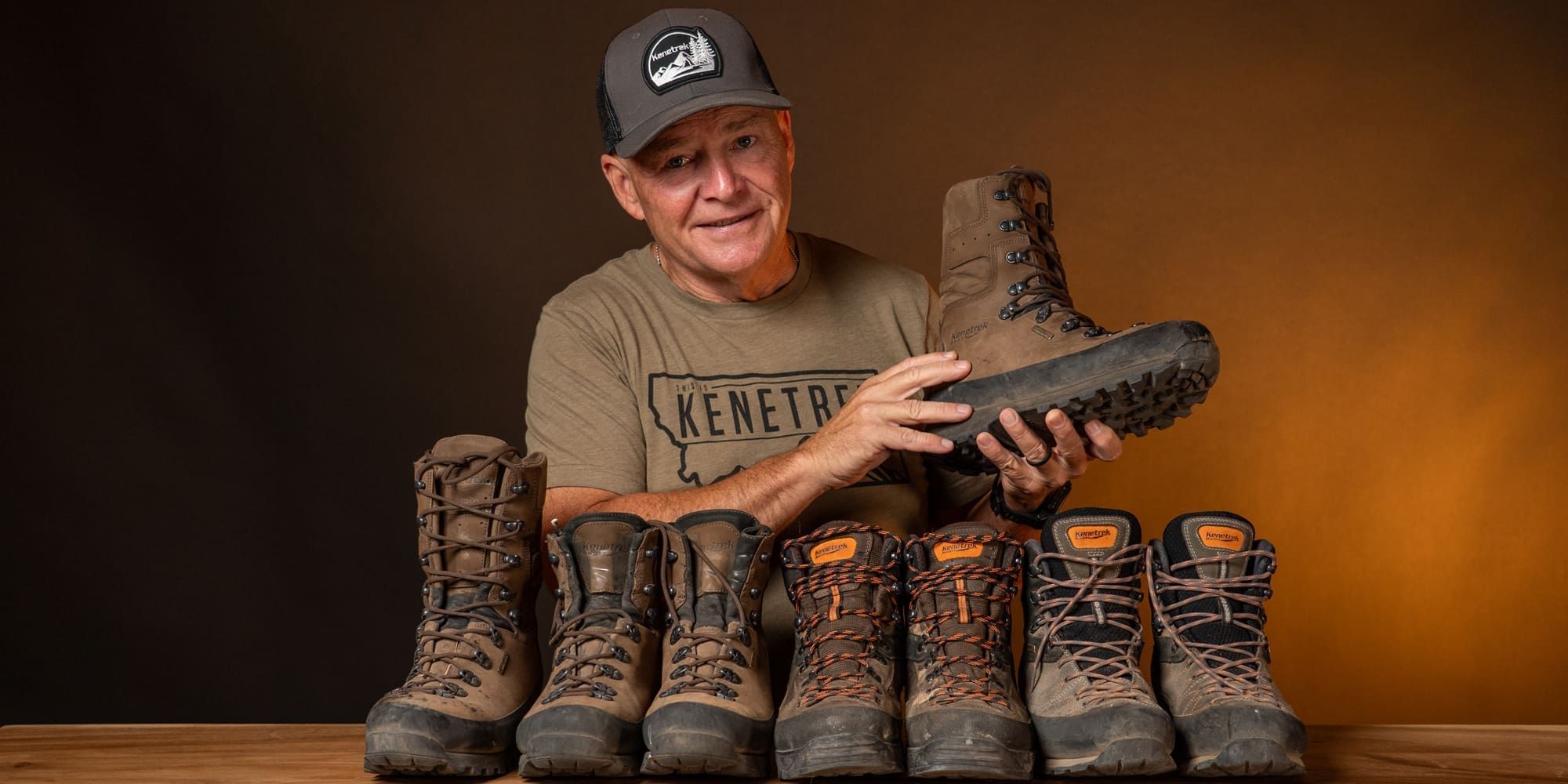
NOTICE: Certain links on this post may earn a commission for Western Hunter Magazine from Amazon or our other affiliate partners when you make a purchase. Thank you for your support.
Lenses for Hunting Photography
To capture unforgettable hunting photography, a great lens is as important as the camera body itself.
A few years ago, good friend and fellow photographer, Rod Sinclair, and I went to photograph black bears. Rod was driving (photo strategy: make sure to have your friends drive, giving you more time to shoot while they park the rig).
We stopped to photograph a small black bear, and as I stepped out, my lens and camera fell to the ground. Luckily, a Really Right Stuff camera bracket was on the camera body, saving it from certain disaster. The lens, however, didn’t fare as well.
The $6000 lens was finished - at least for this trip. Later, I sent it to Nikon for repair under my Nikon Professional Photography membership (a program for full-time photographers). A couple days later, Nikon said the lens couldn’t be fixed timely, so they offered me a brand new one for the price of the repair. For $500, a new lens was soon on my doorstep. Sometimes brand loyalty overrides “savings” you may receive with third-party gear.
In the Summer issue of WHM, I outlined my thoughts on camera buying. The starting point for lens buying is similar. Start by thinking about what hunting photography, followed by what you intend to do with the images. Making images that you can print, share, and even sell as prints likely won’t require the same quality standards as magazine cover images.
Without getting too drawn into the minutia of lens specifications, I’ll give you general principles to consider. This should help you with your buying decisions and save you some time and money.
In General
For every DSLR camera body, there are numerous possibly lenses. Manufacturers like Canon, Nikon, and Sigma make dozens of lenses.
Lenses made by one company that fit another company's camera are called “third-party” lenses. Companies like Sigma, Tokina, Tamron, Rokinon, and even Zeiss and Leica are all third-party lens manufacturers. Nikon and Canon lenses can be used on other bodies, but not without a lens coupler. Personally, I’ve never used one.
All of the major camera brands produce similar lenses, with some variation. Nikon and Canon have an almost identical lineup, although there are differences.
Modern digital lenses are arguably better than their predecessors. They generally operate better, have improved glass coatings, better optics, and are made from lighter materials. They are also often more affordable than in years past.
Today, variable aperture zoom lenses have gotten much better, but as a rule, they still aren’t as sharp as primes (lenses with no zoom). However, zoom lenses are more practical for hunting photography.
Canon or Nikon - Which is Better?
One main reason I shoot Nikon - and the reason you should consider it - is the enormous lens selection. I started in hunting photography using film and manual-focus lenses. When the digital revolution began, I stuck with Nikon over Canon so I could use their lenses.
Nikon uses the same lens mount on its DSLR cameras as it did on its film cameras. This means the old lenses will work on new Nikon digital bodies; not the case with Canon. Either system can produce outstanding images, but Nikon provides more lens options.
Lenses
Lenses are the best investment you can make when building a camera package (they also hold their resale value better than camera bodies). The higher the price usually means the better the product, but you may not need a professional-grade workhorse lens. Something less expensive may work just fine.
I’ll focus on the main lens types and the ones I use. There simply isn’t room to cover all high-end specialty lenses, as it would take up more than this entire magazine.
Primes vs. Zooms:
Prime lenses have fewer lens elements; therefore they’re capable of producing more accurate images. In contrast, zooms have more elements, which equals more distortion, less sharpness and contrast, and less accurate colors.
Sensor Size:
Your lens must match your camera’s sensor size. There are lenses made specifically for crop-sensor cameras. In most cases, the longer telephoto prime lens (300mm and above) and some medium range to long tele zooms, are made specifically to fit full-frame cameras. Lenses made for full frames will work well on crop-sensor cameras, but normally we don't put crop lenses on full frame bodies.
Some Nikon bodies do have a crop-sensor setting to allow the use of crop lenses. You’ll have full-frame lenses forever, even if you currently shoot a crop sensor camera, because should you ever upgrade to a full frame, your lenses will be compatible.
Build Quality:
Raw materials, craftsmanship, and quality control results in how well and for how long it will work. Higher-priced prime and zoom lenses cost more because they're made better, which means they’ll work better, last longer, and maintain integrity after years of heavy use.
Third-Party Lenses
We often see Sigma, Tamron and Tokina producing a third-party alternative well after the release of the manufacturer’s lens, usually at a lower price point. These lenses are suitable for light use, but in my experience, they won’t hold up as well against constant use for extended periods.
The reason to go with a third-party lens is if the major brands don't make the lens you need. A good example is the Sigma 120-300mm f2.8 zoom lens. When it works properly, it’s an outstanding choice. No other lens that I’m aware of can do what this lens can. Canon and Nikon never produced one, but they should have. It’s that cool!
Sigma also makes a new line of lenses call the “art” line. They are remarkably sharp and accurate, and some are much cheaper than the similar lens made by Nikon or Canon. The downside is, at the time of this writing, “art” lenses aren’t weatherproof - they lack rubber seals that guard against moisture! So, if you’re going outside with these lenses, consider the weather or you’ll be buying not just a new lens, but also a new camera body!
An under-evaluated element of owning quality lenses is quality control and manufacturer support. It’s hard to overstate this value.
Buying:
Buy genuine products made for the U.S. Market - don't buy gray market equipment.
Buy manufacturer lenses over third party unless a third party makes a lens that your camera manufacturer doesn’t make (Sigma 120-300mm f 2.8 for example).
Fixed aperture lenses generally produce better images.
Use a clear filter to protect the front glass element. You can remove it for specific shots.
Don't use teleconverters unless you have to.
You can’t fake, create, or somehow hammer out sharpness from a file that’s soft due to inferior quality lenses.
Cheaper lenses can’t resolve to the level of today’s superior sensors. So, if you have a new camera body with a large sensor, you have to match it up with quality glass. If you don't, it would be like putting fixed iron sights on a long-range rifle.
Most third-party manufacturers won’t provide support after only a few years. I’ve experienced this with Sigma on several occasions.
Key Considerations
Don’t convince yourself that you can take an inferior lens and make it work for cover quality images - you can’t. I’ve watched it over and over again. The email always goes something like this, “Tony, you were right. That $300 lens is a $300 paperweight.” Buy the right lens the first time.
Fortunately, it’s not all about price. You can still learn a lot with a cheaper lens, particularly if you can't afford more. If you’re not sure where your hunting photography ambitions might lead you, go with mid range or buy used. I moved up from the consumer to prosumer and then into the professional grade. Today, I’d say skip the consumer grade “kit” lenses and buy directly into the prosumer lens. Some are good enough to produce professional quality results!
So, why do pros spend so much more if a prosumer-grade lens can produce great results? Among the factors are build quality and tolerances. They last longer and can handle more rugged daily use. They also offer faster focus and have superior lens elements. The professional lenses, usually in the f1.4, 2.8 and f4 aperture, also gather more light, meaning you can shoot them in lower light conditions.
Buying used:
Great idea; just do your homework. You can find some fantastic deals. Ebay, Craigslist, and Adorama all are good resources. Make sure to ask about haze, mold, fungus, chips, or any other damage.
Rental:
Renting lenses can also be an option. I’ve had good luck here. Check with your local dealer in a larger city. They may have some great lenses for rent. For the rest of us, I’d recommend Borrowlenses. They have both and east and west coast locations.
Selecting the right lens:
Simply put, the right lens is the one that does what you need it to. In general, longer telephoto lenses are the choice of wildlife and bird photographers. Birders can never have enough focal length.
For larger animals, the 300-500mm range seems to be about the best compromise. For hunting photography, a 300mm is the long end, but I’ve seen a lot of great landscapes shot with longer telephoto lenses, too.
If you primarily photograph things like people, camping, hunting, hiking, or you think you really just need a “walk around” lens, the middle-range zooms are the best option.
Keep in mind that primes are always sharper and faster focusing than zooms. Larger aperture primes also allow more light to enter, making them better for lowlight hunting photography. They are more expensive, but they produce sharper, more accurate image files and are the choice of most professional wildlife and outdoor photographers.
Long Lens Zooms

Nikon af-s 200-500mm f5.6e ED VR - $1400
The 200-500mm (2 to 5) is brand new to Nikon, and no other manufacturer makes this lens. It’s a great combination of medium to long telephoto. It has fast, accurate focusing, great color, is relatively lightweight, and packs nicely. It’s not a mountain lens, but it’s as close as you can get and still have 500mm magnification. Image quality is good; not as good as a prime lens in the same focal length, but good enough. As with all telephoto lenses, shooting technique is important.
The lens is considered “slow” because of its small diameter aperture (don’t confuse “slow” with the focus speed - this lens still has fast, smooth focus). At its widest aperture, it’s a 5.6. This limits lowlight shooting but it can be used effectively with higher-end DSLRs like the D700, D750, D4, D4S, and D5, and to some extent the new D500, due to their incredible light sensitivity.
The weakness of a slow lens is ability to gather light. There’s always a tradeoff. What you give up in making the lens aperture smaller, you gain in overall size and weight. For traveling photographers, this is of critical importance.
The lens will fit and focus properly with all modern Nikon DSLRs. If you want to get into to the telephoto lens space for shooting wildlife including birds, this is an excellent choice. The price point is amazing, too, and this lens is small enough to go just about anywhere.
Frankly, I can’t believe Nikon can put this much quality into a lens and sell it for $1400. Because it’s so new, we’re not really sure of its durability, but if it’s anywhere close to the new generation 80-400, it will last.

Nikon af-s 80-400mm f4.5-5.6g ED VR - $2300
(Canon equivalent is the 100-400mm)
The first generation of this lens was just average. The new, long-awaited second generation has excellent image quality. Its extreme zoom range from 80mm to 400mm (160-600mm on a 1.5x crop sensor camera) really covers most of what you would need for hunting photography. I’ll admit I was skeptical of this lens before I purchased one, because at $2300, it still was a significant investment for an unproven lens (it’s mainly a backup, but occasionally it’s my main lens on tough trips when space and weight are priority or when I travel on small, two-seat airplanes).
Fortunately, it’s usable in many situations. What it lacks in image quality, it makes up for in size, because it can go more places. Smaller and lighter than the 200-500mm and only 100mm shorter, it’s the best lens in the consumer telephoto zoom category – hands down. If I had one choice for a small telephoto zoom, this would be it, period.
You can add the TCE III 1.4 tele-extender, making this roughly a 700mm f8 on a full-frame or roughly an incredible 300-900mm zoom lens. I wouldn’t recommend this, but Nikon did design it to fit. If you put a tele converter on this lens, only professional-level bodies like the D4, D5, and D500 can auto-focus it. The lesser bodies weren’t designed to focus at f8 or above with this lens.
A colleague told me he sold his 200-400mm f4 af-s VRII Nano and now exclusively uses this lens for wildlife. I can’t go that far. I haven’t seen his files, but apparently he’s found a way to make it work.
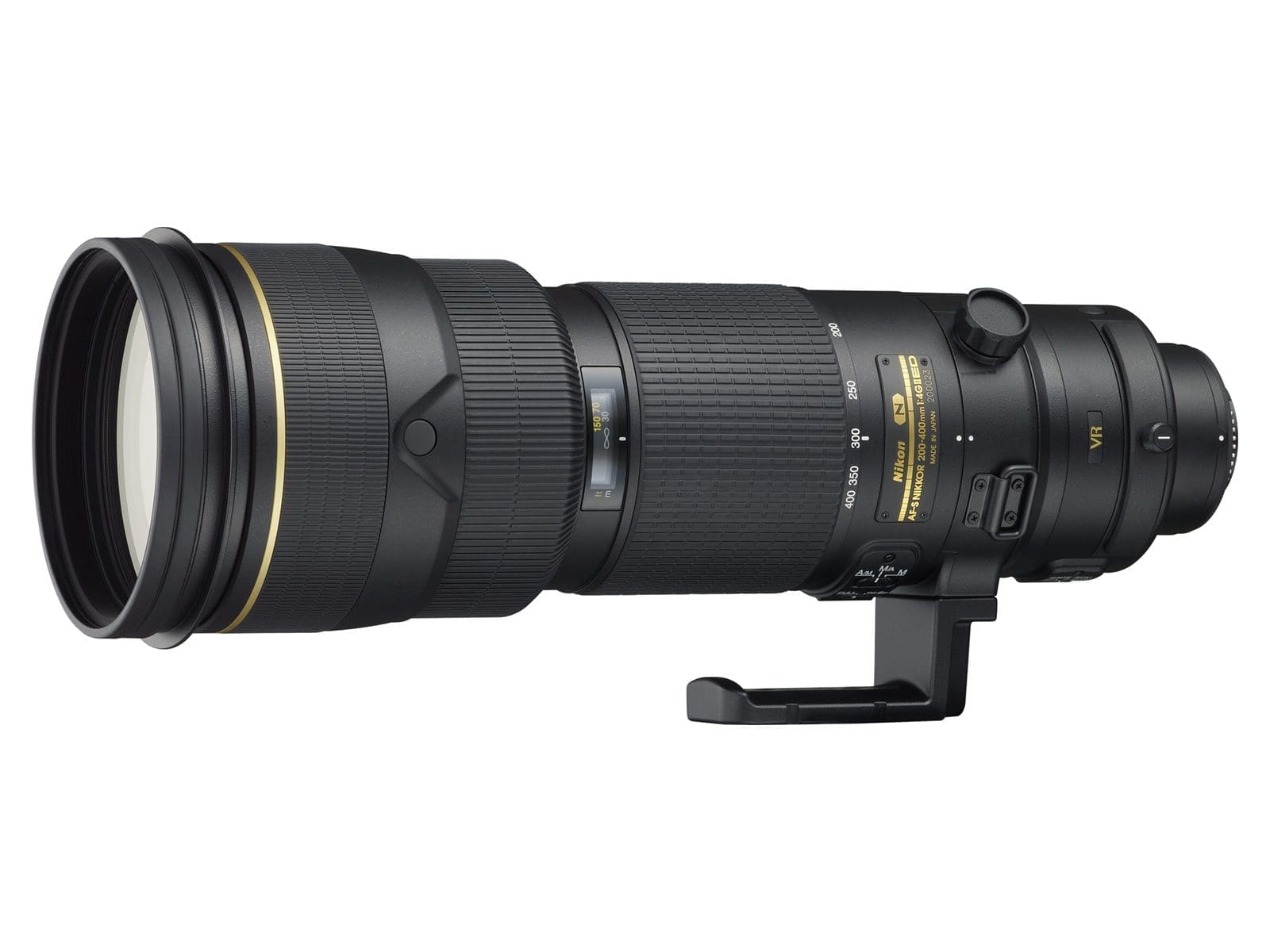
Nikon 200-400mm af-s ED VRII - $7000
This is my go-to workhorse lens. If I could have only one, this would be it. I wouldn’t say that if I was a birder, but I’m not. On the Canon side, there’s the Canon 200-400 – only about two years old now, whereas the Nikon af version has been around for about 6 years. I’ve seen guys who used to shoot primes switch over to this lens.
The unique thing about the Canon version over the Nikon is the Canon has a built-in 1.4 tele-extender. While I haven’t used it, I’ve watched some of the world’s best professionals shoot this lens as their bread and butter, almost divorcing the bigger 600mm f4 lens.
This lens can be shot wide open at f4 at the end of its zoom range and still produce cover quality images. This is really where this lens outperforms any consumer zooms - you can shoot this lens wide open and get sharp images. With other zooms, you’ll need to stop down a stop and avoid shooting at either extreme end of the zoom.
The downside to the 200-400mm lens is that it’s heavy…and expensive. In most cases, it’s out of reach of most consumers or amateurs in hunting photography.
If you want to get closer to creating the sharpest images possible and still have some zoom, I’d suggest buying a used, first-generation VR af-s 200-400mm lens. They are very inexpensive as compared to MSRP, and there’s almost no difference in image quality over the newer model. Take my word for it, I’ve owned four and I tested them all, even against the 80-400 and the 500 f4 prime. I couldn’t tell the difference between the images.
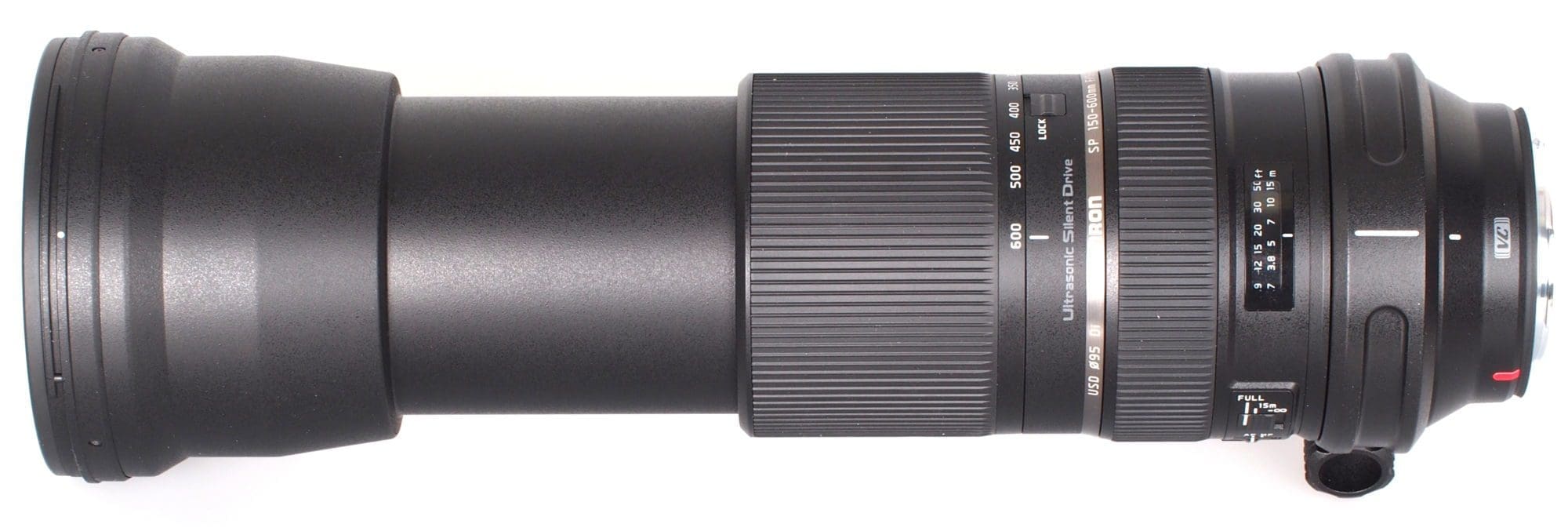
Tamron 150-600 SP Di USD - $1000
This and the Sigma “Bigma” (the new Sigma 150-600 DG OS HSM) are both about the same. I’d give a slight edge to the Sigma, but overall, neither is as good as the Nikon options (Canon doesn’t have an options in this class).
While it might seem great to be able to zoom out to 600mm, there’s almost nothing good about the files. They are soft - the background often looks digital, not soft and creamy. Unless you can nail the shot, both with focus and great lens technique, you won’t do much with the images shot at 600mm – particularly if the subject is far away.
If you’re just documenting wildlife and don’t need to print them large or sell files, it would be a good choice. The autofocus is a little slower on both lenses, but it’s still fast enough to shoot most big game or slower small game. I wouldn’t go after pintails in flight with these lenses and expect a lot of keepers.
I’ve gone through many third-party lenses and wouldn’t spend money on them, except for a few exceptions - the Sigma Art collection and the higher-end Zeiss lenses. I don’t have any confidence in either Tamron or Tokina.
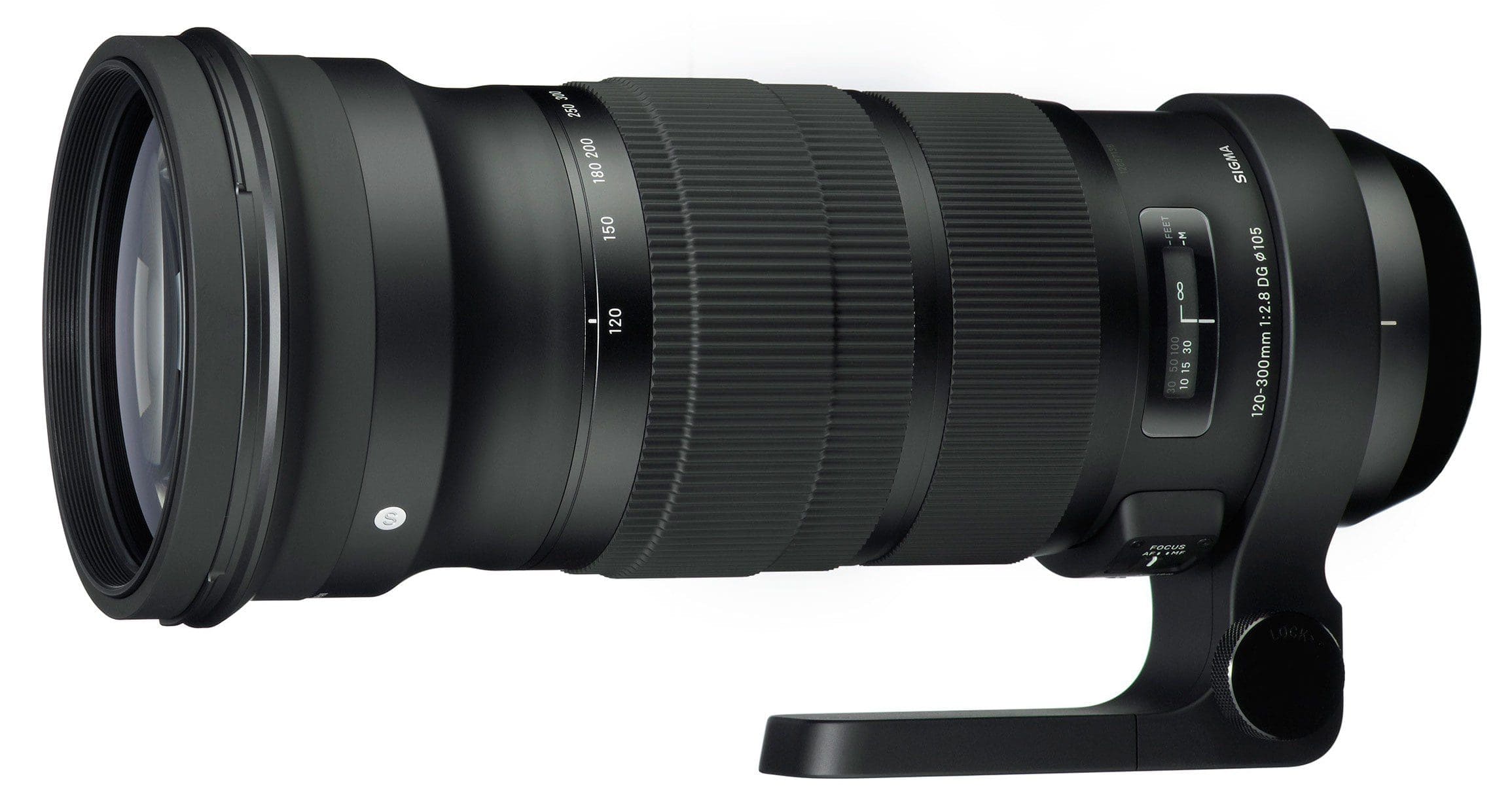
Sigma 120-300 2.8 DG OS HSM (for Canon and Nikon) - $3400
This is one of my all-time favorites. Yeah, I said don’t buy third party, but I also said unless there’s no other option. Before the 200-400 came out, I used this lens all the time; it later became a backup. It still delivered stunning images, until I dropped it and destroyed it. Remember what I said about customer service? I had a slightly older model and they discontinued it, so they wouldn’t service the lens. I was out over $2500!
For shooting sports like rodeo, horseracing, baseball, nighttime football, or other events in lower light, this is still the lens I’d choose to shoot. If you buy one, be sure to do some testing with it once you get it and return it if it’s not up to standards. It may take a couple versions to find one that’s sharp, or you may have to send it in to Sigma, but when this lens works, it’s really good.
Primes
Nikon/Canon 35mm 1.4, 24mm 1.4, 50mm 1.4, 85mm 1.4, 200mm f2, 400mm f2.8, 500mm f4, 600mm f4 - Price range $500-$12,300
These are truly the workhorse lenses of the professional outdoor photographer. You’ll find at least two or three of these lenses in nearly everyone's hunting photography collection and I’d bet that almost every photographer worth their salt owns a 50mm. One of the main reasons these are the go-to lenses is build quality. They are simply built to take punishment.
You’ll pay 2-15 times more for these lenses than lower-grade equivalents, but if you demand gear that works, there are really no other options.
Finally, if you want that great, shallow depth of field –the glamour look - you’ll have to get into shooting wide aperture lenses or become a master at Photoshop. You’re better off making good images right out of the camera.
Short to Middle Zooms
Nikon 70-200mm f2.8 af-s VR II Nano - $2100
This is one of the most widely owned zoom lenses. It has superior image and build quality. It’s a little heavy, but it’s quality. I seldom leave this lens at home. It’s pairs well with a 1.4 tele-converter to make it roughly a 100-300mm lens. I don’t like using tele-converters, but this lens is capable of handling them.
Nikon 24-120 f4 - $1100
This is one of my most used lenses for travel and “run and gun” hunting photography. It’s fast enough to be useful in lower light, it has VR, and the glass is good. There’s some slight distortion, but nothing that Lightroom can’t fix with one click.
I shoot this lens mostly at f5 or above. It can be okay at f4, but you’ll get serious vignetting – which also can be helped in Lightroom – but it’s just not good wide open.
This is the lens I never leave at home. I can shoot landscapes, wide-angle wildlife, and I can zoom in and block out elements I don’t want in the shot. It’s not the sharpest or best lens out there, but in some cases you have to compromise. It’s not ideal for a lot of types of hunting photography, but I recommend it for run and gun, everyday use, hiking, and general documentary photography. There’s an older version of this lens; it’s not as good, but it’s 1/3 the price!
Nikon 18-200 af-s VRII or Canon
(this is a DX, crop sensor lens) - $650
This is another great option for a good all-around lens that will work on all new crop sensor cameras. This lens isn’t as sharp as the 24-120, but it’s close, and you get an extra 80mm on the long end and 6 on the wide end. That 6mm on the wide end is a lot; you’ll notice it over a 24mm. I’ve shot this lens, but I don’t own it. However, I’ve seen and heard good things. If you can only have one, this would be a fantastic choice!
Nikon/Canon 24-70 f2.8 - $1800
This is a pro photojournalist’s workhorse. This lens is expensive, but it’s fantastic - one of the best middle zooms ever made. You’ll pay through the nose for it, but if you want to shoot shallow depth of field, this lens will go all day long stopped down about 2/3 of a stop! It’s heavy, a bit bulky, and I don’t like the design, but the image quality is outstanding.
Nikon 14-24mm f2.8 - $1900
The 14-24 set the standard for a wide-angle zoom. Until Canon introduced its own recently, many Canon users were buying this lens and coupling it to Canon bodies. This is the best wide-angle zoom available, and the new Canon 11-24 f4 is just as amazing. Neither of these zooms is better than their equivalent primes, but sometimes having a zoom helps with composition.
Great, Affordable Lenses
(If you can find them)
Nikon 180mm ED f2.8 - $250-300
It will be hard to find a sharper telephoto lens at this price. The lens mates well with tele-converters, and when used as a straight 180mm lens, it’s a great, long portrait lens and is at the lower end for wildlife.
Nikon 80-200mm f2.8 ED - $500-800
This is a fantastic lens if you're new to hunting photography and want superior image quality right out of the gate. This zoom range is still the standard for professional photographers. Every pro probably has some variation of this lens. This model is a bit bulky and the focus isn’t very fast (on some consumer-grade cameras you lose autofocus), but it’s sharp. This lens will make your subject “pop”. Buy this zoom range or this lens for just about everything.
Nikon 300mm f4 ED - $400
This is a super sharp prime lens that also takes a tele-converter well. If I were just getting into hunting photography, I’d buy this lens and make it work. For its relative small size, low price, and superior image quality, you’d be capturing professional images the first time out. Using this lens will help you understand and appreciate how good prime lenses really are. I see people using this lens all the time. It won’t autofocus on consumer-grade DSLRs. It will maintain auto focus – albeit slow – with the D3, D700, D4, D5, and a few others.
Tony’s Recommendations:
Telephoto lens:
Nikon – 80-400mm af-s VR
Canon – 100-400mm IS USM
Middle to Normal Range:
Nikon – 24-120mm f4 or 18-200mm
Canon – 24-105mm f4
Wide-Angle:
Nikon – 14-24mm f2.8 afs
Canon – 11-24mm f4
Sigma – 24mm 1.4 Art Series (not weatherproof)


